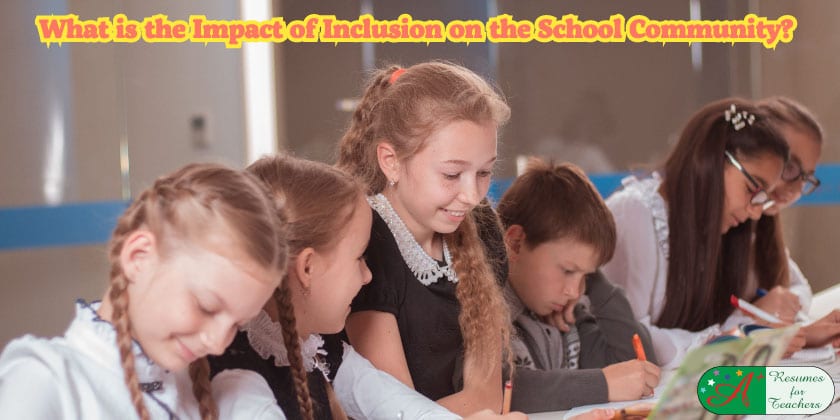What is the impact of inclusion on the school community? Inclusion means all students, regardless of academic and developmental levels, will be given the chance and support needed to reach their full potential.
The common core program dictates all children should receive a quality education.
Each child is unique, and as such, programs must be put in place to facilitate the goals and needs of students who are considered special needs, perform on grade level, and are deemed exceptional. Inclusion is an effective method of achieving student goals.
Although it is possible to construct an effective argument about the negative effects of inclusion, inclusion is an important educational topic, and most schools view it positively. It’s vital to answer this question by listing the positive aspects of inclusion for the school community.
An interviewer will want to see you value this learning environment and see the inherent benefits to student learning.
Here are thoughts to keep in mind when constructing your answer to this interview question:
Inclusion can be looked at in different ways. Some teachers view it as establishing heterogeneous classrooms, where students of all developmental levels are placed in the same room and receive differentiated instruction.
Others feel that homogeneous grouping is a better way to help students of all levels succeed. This means grouping students according to developmental level and placing them in separate classrooms, ensuring that they receive the individualized and/or specialized instruction they need to succeed.
Though the latter method may seem more exclusive than inclusive, it works to ensure that no child is left behind and all students can be included in the learning process.
To ensure that all students receive a quality education, teachers and administrators can request a teacher’s aide, who can provide one-on-one support for struggling students or introduce challenging activities for those who are exceptional.
Regardless of the type of classroom or grouping used, all students must be allowed to communicate and socialize with one another. This type of learning will help students become well-rounded, tolerant, caring, compassionate, and respectful individuals who will thrive in the real world.
Furthermore, teachers must adapt their lessons and teaching techniques to accommodate multiple intelligences and facilitate all learners’ styles. Ensuring each child can actively participate in the classroom and comprehend and retain the material in whichever manner suits them best.
All parties in the school community, including students, teachers, administrators, other staff, and parents, must achieve inclusion. The school principal is the key player in the inclusion reform, demonstrating and leading a highly inclusive and supportive learning environment.
The teacher promotes diversity, integration, acceptance, and support of anyone in need, regardless of capability or disability.


